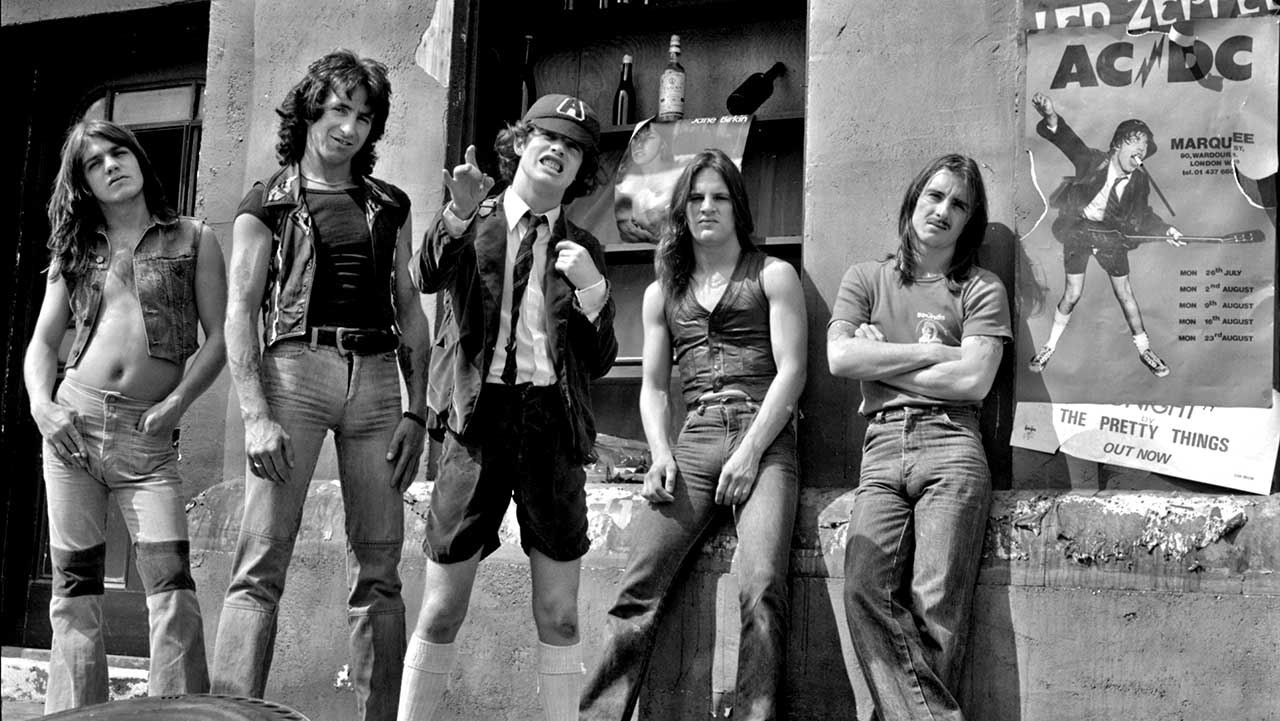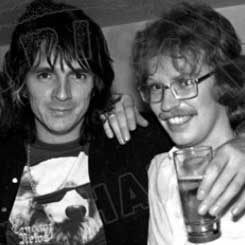Cheap Thrills: How AC/DC were repackaged for international stardom
After two Australia-only album releases, it was time to look abroad, and a compilation was AC/DC's first step towards global fame

Dear Sounds,
Whilst scanning your pages over the past few weeks I have come across pictures of a rather delectable-looking creature who goes under the name of Angus Young and who is apparently the lead guitarist with an Aussie rock outfit called AC/DC. As an ardent fan of punk rock (and schoolboys), I reckon it to be quite possible that I should appreciate their music and wondered if you could get me any further info on this young man and his sidekicks. Surely you’re not going to leave me drooling over the photos and not tell me more about Mr Young and co?
– Jane Hunt, Lowestoft, Suffolk
(Letter published in Sounds, June 12, 1976 edition)

In spring 1976, an elite hit squad of journos from Sounds music weekly – including yours truly – was invited to the London offices of Atlantic Records to watch a film in the company’s in-house cinema. A film! A real-life motion picture! This was heady, exotic stuff. Of course, there were no DVDs, video streams or mpeg files in those days. Not even VHS cassettes. Atlantic treated us to the full-on celluloid experience, complete with old-fashioned reel-to-reel projector chattering away at the back of the room and everything.
Drinks were drunk, smokes smoked and canapés consumed as we watched flickering black-and-white footage of the label’s new signing – a motley posse of so-called “Antipodean punk rockers” – performing to an audience of sozzled swagmen in a tumbledown shack on the outskirts of Melbourne, Australia. The Atlantic bods were hoping we’d be impressed by this seamy spectacle, because they wanted to bring the band over to Britain for a series of Sounds-sponsored tour dates.
And were we impressed? Most certainly. We hugely enjoyed the delinquent nature of the infectious, boogie-strewn music; we took immense pleasure in the songs’ lewd ’n’ lascivious lyrics; we greatly admired the bare-chested machismo of frontman Bon Scott, with his missing teeth and battle-scarred demeanour.
Sign up below to get the latest from Classic Rock, plus exclusive special offers, direct to your inbox!
But we had a few misgivings. For starters, we reckoned the bisexual connotations of the band’s name – which, we’d learned, was AC/DC – might put people off. (We were journos, not electricians, okay?) We couldn’t the stop the words of a 1974 song by Sweet, coincidentally titled AC-DC, from buzzing around in our head: ‘She got girls/Girls all over the world/She got men/Every now and then…’ Additionally, we thought the hyperactive schoolkid cavorting about in short trousers – a guitar prodigy called Angus Young, purportedly a mere 16 years old – was a bit of an acquired taste. Finally, apart from the band’s snot-nosed attitude, and the snot on the lapels of Angus’s blazer, we didn’t exactly see where that punk-rock tag came from.
Still, we shook hands with the record company toffs and agreed the basics of what would become the 19-date Sounds-AC/DC Lock Up Your Daughters Summer Tour of the UK, to begin on June 11, 1976 at Glasgow’s City Hall and end on July 7 at London’s Lyceum. Admission was £1 – or 50p upon production of a special Sounds money-off voucher. Could we have predicted that just a few short years later, these Oz larrikins would be well on their way to becoming the biggest, baddest rock band on the entire planet? Could we heck. At this point they seemed more suited to the compact confines of the Red Cow pub in Hammersmith than the Red Bull Arena…
A month or so prior to our meeting, Atlantic had cherry-picked songs from AC/DC’s two Australia-only albums – High Voltage and T.N.T., both of which came out in ’75 – to create a brand new nine-track ‘compilation’. In actual fact, the majority of songs on said offering were from T.N.T., with only two – Little Lover and She’s Got Balls – from High Voltage. Even so, the label elected to reprise the High Voltage title for this, AC/DC’s first non-Albert Productions release.
Angus – sticking out his tongue in inimitable style, the point of a bright-yellow lightning bolt seemingly welded to the toe of his right sneaker – featured prominently on the cover of High Voltage V2 that most of the world will be familiar with. In Europe, however, it had a different cover image: a garish illustration of Bon and Angus in full flight, the former’s barrel chest bulging like Popeye’s after a marathon spinach bender, the latter depicted as a satchel-slingin’ schoolboy with a gasper in his mouth, on the run from matron’s clutches.
And the music? Suffice to say that revisiting High Voltage for the purposes of this article proved to be an immensely pleasurable experience. The album might be 40-odd years old, but it still crackles with live-wire intensity – pun most definitely intended.
The production, by Harry Vanda and George Young, is crisp and simplistic, in its way every bit as good as Robert John ‘Mutt’ Lange’s more sophisticated knob-twiddlings on later AC/DC diamonds such as Highway To Hell and Back In Black. And you gotta admire the audacity of including bagpipes on opening track It’s A Long Way To The Top (If You Wanna Rock’N’Roll), AC/DC’s Scottish heritage not being widely appreciated at this early point in their career. From T.N.T, complete with Scott’s impeccable enunciation of the hookline ‘I’m dyna-mite’, via the endearingly sordid The Jack, to the libidinous Can I Sit Next To You Girl, this was indeed an international debut to savour.
Subtly different versions of follow-up album Dirty Deeds Done Dirt Cheap were issued in Australia and the rest of the world. For the purposes of this piece we’ll concentrate on the latter release, which hit the shops – in the UK at least – late in ’76, complete with cover art by Hipgnosis. Bizarrely, Dirty Deeds wasn’t released officially in the US until March ’81, as Atlantic execs there had misgivings about Scott’s gritty vocal style. They also thought songs such as Squealer, Love At First Feel and Big Balls were somewhat crass and tasteless. Which they were. That was the whole goddamn point!
American recalcitrance aside, there’s no getting away from it: Dirty Deeds is a tremendous record, arguably Scott’s best with AC/DC. That claim hinges on a song that’s atypical for the band: Ride On, the best bluesy ballad you’re ever likely to hear.
Normal AC/DC service is resumed with the rip-snorting title track and the mischievous Problem Child. But following Scott’s death in February 1980, the desolate, searching spirit embodied by Ride On took on new meaning and significance. And that’s why Dirty Deeds will always be about that particular song.
This was originally published in Classic Rock Presents: The Complete AC/DC Story
Geoff Barton is a British journalist who founded the heavy metal magazine Kerrang! and was an editor of Sounds music magazine. He specialised in covering rock music and helped popularise the new wave of British heavy metal (NWOBHM) after using the term for the first time (after editor Alan Lewis coined it) in the May 1979 issue of Sounds.

